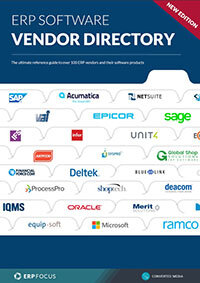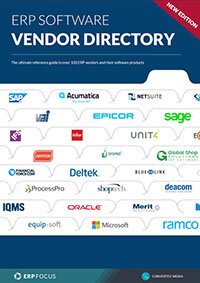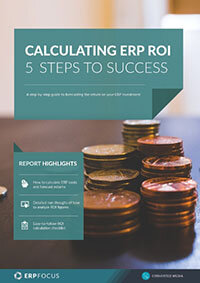Are you paying too much for your ERP?
In the enterprise world, cost is endemic. Specifically, ERP cost management tends to consume more and more time over time. This is simply because the larger the resources-mass, the more frangible a system becomes requiring more and more maintenance over time.
Consequently, if you add that pressure on top of constant customizing, process-dinking, annual subscription hikes, maintenance, support, the potential cost of ad hoc consulting fees, and various other requirements associated with daily operations, a departmental budget can get pretty bare if you’re not paying attention to your pennies. Nevertheless, growth is cost, and vice versa, and things can get out of hand unless you’re constantly looking out for ERP cost mitigation.
Consequently, here are several areas where you might be paying too much for your ERP system, and if so, how you can save a couple of bucks along the way.
Unbridled customization
Today’s ERP systems are built to accept customization, but that’s not necessarily a good thing in certain situations. If you have created a large list of customization scripts that are now obsolete, it’s likely they are soaking up cycles, thereby slowing down processing times (time is money – right?); along with direct or in-direct maintenance costs that could be better applied to other system usage. Trim the pig and get rid of the clutter.Recommended reading: find cheaper ERP vendors using our comprehensive and regularly-updated ERP vendor directory.
Annual subscription hikes
If you are operating on a cloud platform, and paying on the basis of an annualized fees schedule, chances are that somewhere in the bowels of the fine print, you’re potentially accepting fractional cost increases each year whether you know it or not. Most of the time, these cost ups are minimal, and somewhere on the order of 0.25% to 0.75% per seat; so in early days of the system agreement, the cost value of these hikes becomes virtually unnoticeable.
However, over time if you are operating a large enterprise, consuming many seats, these year-over-year percentile increases can eat a budget up quickly if you’re not paying attention. The resolution here is to audit your fees schedules accordingly, whilst ensuring that you only pay for necessary seats.
Clawback charges
This cost gotcha sometimes applies when resolving the previous area of concern. Some annual subscription contracts call for a ‘clawback’ tariff in the event that an enterprise asks for a seat to be installed, but instead decides to abort the client downstream, while asking that the installation be removed to the master fees schedule.
Sometimes these costs are passed on by use of fractional values, and other times they are passed as flat-fee charges. Nevertheless, the resolution is to ensure that you a) read your master contract carefully before executing a subscription agreement, b) audit your fees schedules annually; and c) if you choose to abort a seat, take a minute to contact your provider to ensure that you understand what will happen in the event.
Granted these are only three ways to avoid the experience of a sudden ERP cost scare, but they’re important enough that you should remember them whenever you’re in the midst of any internal budget evolution.
That said, if there’s only one central piece of advice you should bear in mind when keeping ERP costs in check, it’s to ensure that you go through your contract terms on a regular basis. More times than not, unless you look critically at your business agreements, there’s going to be something you’ll miss from the outset that you might have saved later.
Free white paper

ERP Software Vendor Directory
Put the most comprehensive ERP vendor directory on your desk today

Featured white papers
-

Calculating ERP ROI: 5 steps to success
Calculate your new ERP's financial benefits with this comprehensive guide
Download
Related articles
-

Top 10 ERP selection criteria (including checklist)
The most important ERP selection criteria you should keep in mind during your selection process.
-

Secret KPI: Why Your ERP Implementation Team Matters More Than Software
Learn how Godlan ensures successful ERP implementation for manufacturers with proven strategies &...
-

How to conduct a thorough ERP audit
The types of ERP audit, and step-by-step instructions on how to audit your ERP system

